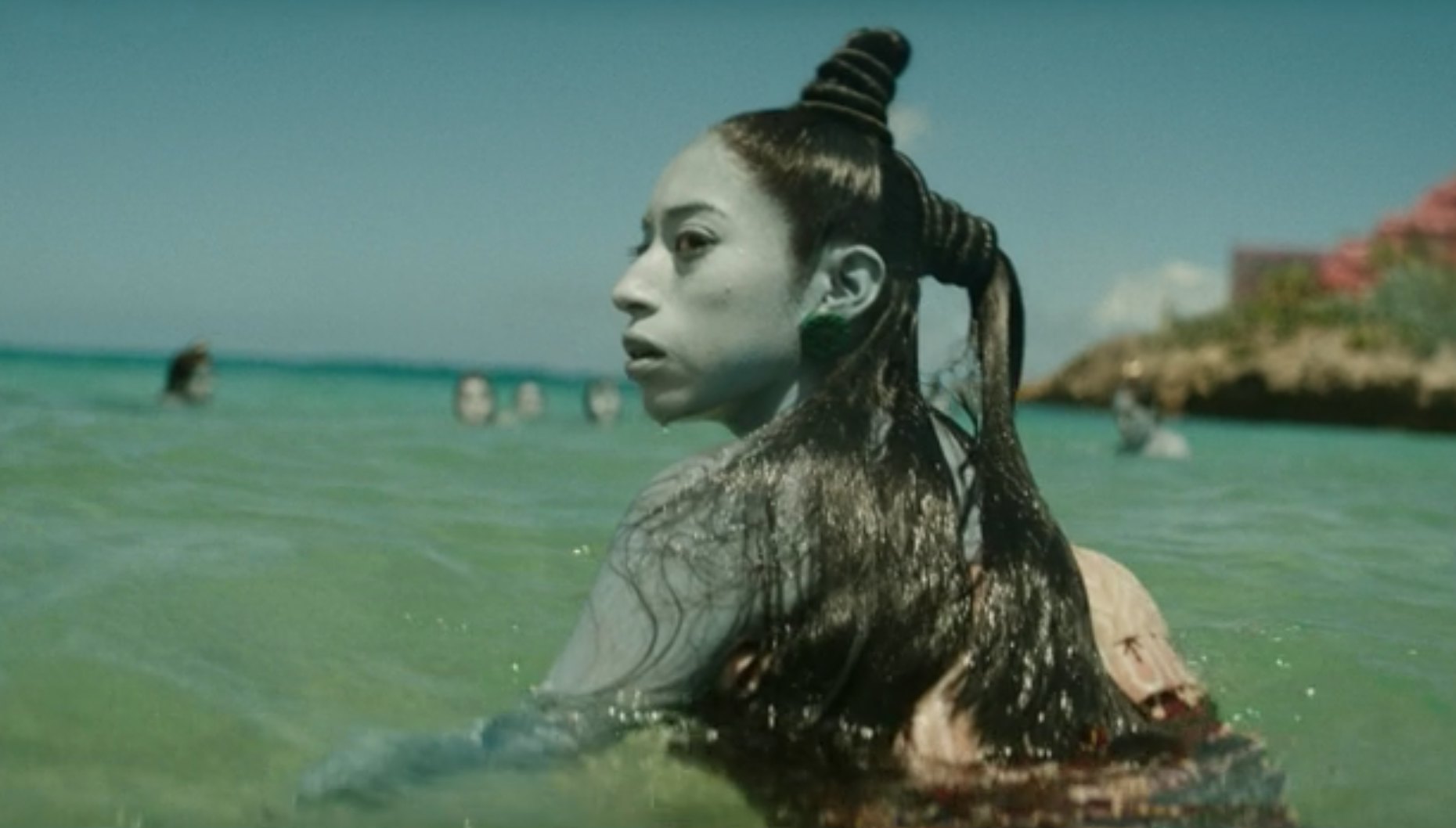
Some 365 million years ago, our fishy ancestors evolved limbs that enabled them to climb out of water and onto land — forming the evolutionary bridge to all terrestrial land mammals that would one day inhabit planet Earth, including humans.
Even though we’re hundreds of millions of years removed from our ancestral transition between water and land, humans maintain a special relationship with the ocean — a relationship illustrated beautifully in Marvel’s latest sci-fi epic sequel, Black Panther: Wakanda Forever.
Spoilers ahead!
The movie pits the people of Wakanda against the Talokan — a society of people inspired by real-life Mesoamerican and led by the serpent god, Namor, who evolved centuries ago to live and breathe underwater. In the movie, Namor explains how his ancestors were being besieged by white colonizers. They sought guidance from the god Tlāloc, who led them to consume a blue plant.
“The plant took away their ability to breathe air, but enabled them to draw oxygen from the sea,” Namor tells Princess Shuri of Wakanda. Namor is unique in that he can survive on both land and water, but the rest of his people adapted to a solely aquatic lifestyle.
So the people left their colonized lands and fled to the sea, forming an underwater refuge known as Talokan. Through this device, Wakanda Forever shows a fictional example of humans who returned to the water for safety. The movie’s premise offers an opportunity to re-examine our uniquely human relationship to life on sea versus land — including a real-life group of people whose society is strikingly similar to Talokan. Let’s dive in (pun unintended).
Reel Science is an Inverse series that reveals the real (and fake) science behind your favorite movies and TV.
How Did Our Ancestors Come to Land?

Roughly between 360 and 400 million years ago, a group of four-limbed animals known as tetrapods climbed out of the sea and onto land, setting the stage for life on Earth as we know it — including our own human existence.
Tetrapods basically descended from the last common ancestor of reptiles, amphibians, and mammals. In 2006, scientists first published research on a “tetrapod-like” fish called Tiktaalik, which likely served as a transitional fossil between fish whose limb-like fins helped them navigate shallow waters and the land-based tetrapods that followed.
Robert Gess, a paleontologist at the Albany Museum in South Africa, told Discover Magazine that tetrapods likely moved to the ocean to “exploit” a resource free of their ocean-dwelling predators. In evolutionary speak: they fled to the land for safety — a reversal of what Namor and his people would do hundreds of millions of years later.
But strangely enough, there’s also evolutionary precedent for returning to the sea from land — Namor and his people are far from the first living beings on Earth to dive back into the ocean. Whales actually evolved from a group of terrestrial mammals that lived near riverbanks in present-day Pakistan. And last year, scientists reported on a fishy species that evolved to walk on land but returned to the water.
“You had this evolutionary series of fish evolving to walk, but this one said, 'Eh, not going to do that one. I'm going back in,'" said Neil Shubin, a co-author on the study told NPR.
Other species such as the salamander-like Crassigyrinus scoticus lived “secondarily” aquatic lifestyles, meaning they could technically live on land but their reduced forelimbs made terrestrial difficult, so they largely adapted to return to an aquatic way of living. Modern-day examples of secondarily aquatic animals include polar bears and penguins.
Did Humans Previously Evolve to Live in Water?

If humans had evolved to live completely underwater, they’d likely have to be somewhere in the ballpark of 1000 pounds to have enough insulating fat so we could move quickly to find food in extremely cold water. That 1000-pound figure comes from a 2018 study by Stanford University scientists.
So, the trim, muscular physique of the people of Talokan probably isn’t actually great for underwater living. Although humans didn’t grow to such large weights, there are some scientists who still maintain that water was key to human evolution.
The dominant wisdom today is that humans descended from treetop-dwelling primates to live a bipedal, upright lifestyle through a series of terrestrial evolutionary adaptations over millions of years. But there’s still significant room for dispute as to just how or why humans evolved the way we did.
Back in the 1960s, marine biologist Alister Hardy proposed a now-discredited “aquatic ape” hypothesis, which purports to explain why humans evolved distinct characteristics — hairlessness, subcutaneous fat, bipedalism, etc. — which our closest-living primate relatives lack. The highly controversial theory suggests that our ancient hominin ancestors lived a “semi-aquatic” lifestyle — primarily eating tropical fish and tubers.
Since these ancient peoples spent significant time in water, they would have evolved features more common in aquatic mammals like big brains, breath-holding, and subcutaneous fat to keep us warm in the water. Bipedalism, according to this hypothesis, emerged to help humans keep their heads above water.
But there’s been little evidence to support the aquatic ape hypothesis, such as fossils demonstrating such a semi-aquatic lifestyle. Critics state that aquatic ape proponents are enamored with simple “umbrella” hypotheses that try to offer a single explanation as to why humans have a unique set of evolutionary features when it’s more likely these features evolved in a series of complicated adaptations over a long period of time.
To put it bluntly: alas, none of our ancestors were probably living the high life in the water like the people of Talokan.
The Real People Who Evolved to Thrive Underwater
The aquatic ape hypothesis may be disputed, but science has proven how one real-world group of people evolved to live at least partially underwater — the closest equivalent we have to Talokan on Earth.
Known as the “sea nomads” the Bajau people of Southeast Asia have survived for a thousand years at sea by diving to depths greater than 200 feet in search of meals, requiring them to hold their breath for several minutes at a time.
According to 2018 research published in the journal Cell Press, the Bajau evolved larger spleens to help provide more oxygen during diving. When mammals dive, their spleens contract and release oxygen-carrying red cells, boosting their oxygen up to 10 percent. The scientists found the spleens of the Bajau people are up to 50 percent larger than those of neighboring groups who don’t interact with the sea.
Most of us aren’t genetically gifted with enlarged spleens, but you can train to learn to hold your breath for longer than average. Kate Winslet reportedly broke an acting record by holding her breath underwater for seven minutes for Avatar: The Way of the Water, and Tenoch Huerta — who plays Namor in Wakanda Forever — reached an impressive five minutes.
So, with a little practice, you too could probably live underwater like the Talokan — if only for a few minutes.
Black Panther: Wakanda Forever is streaming now on Disney+.







